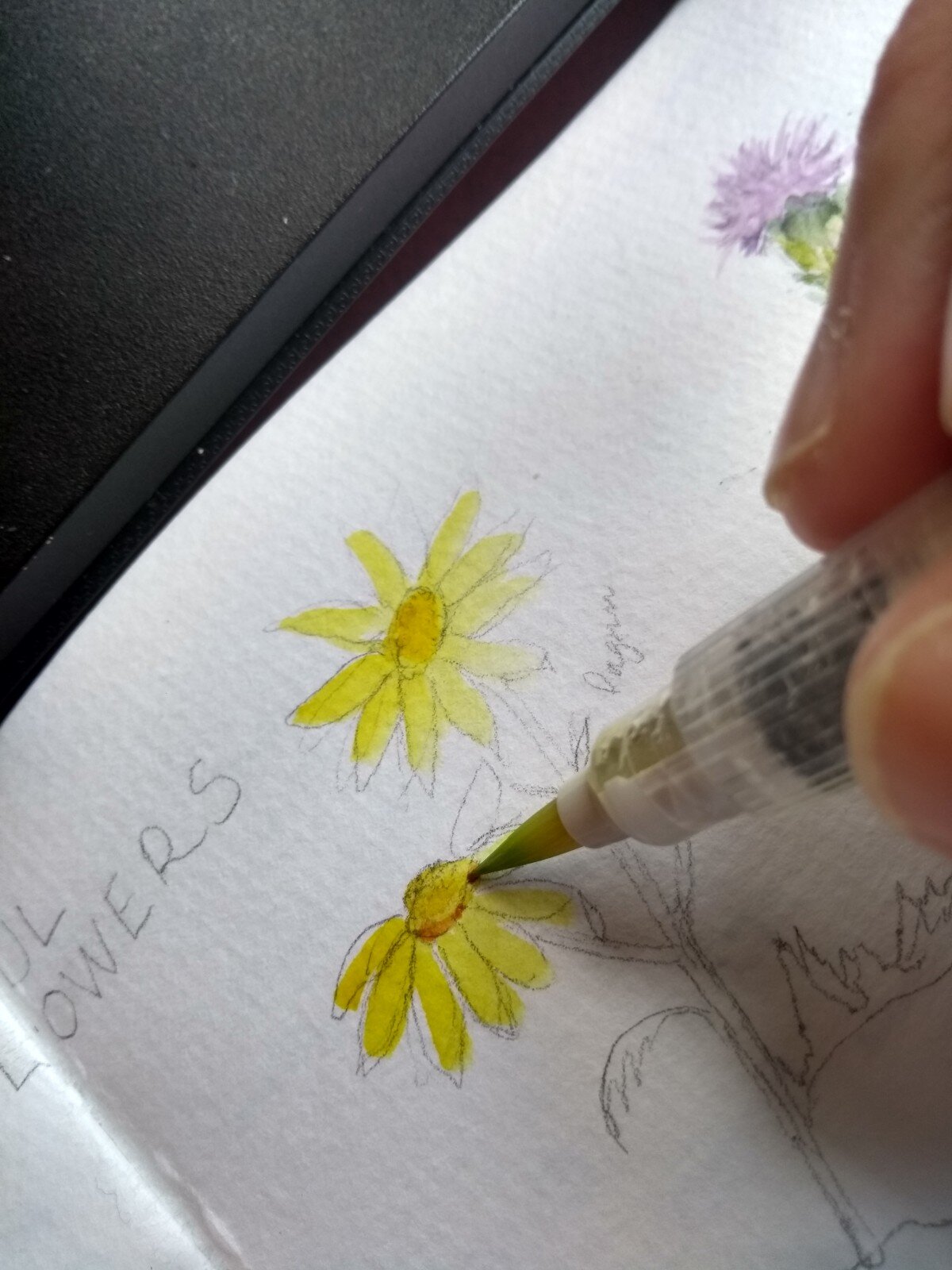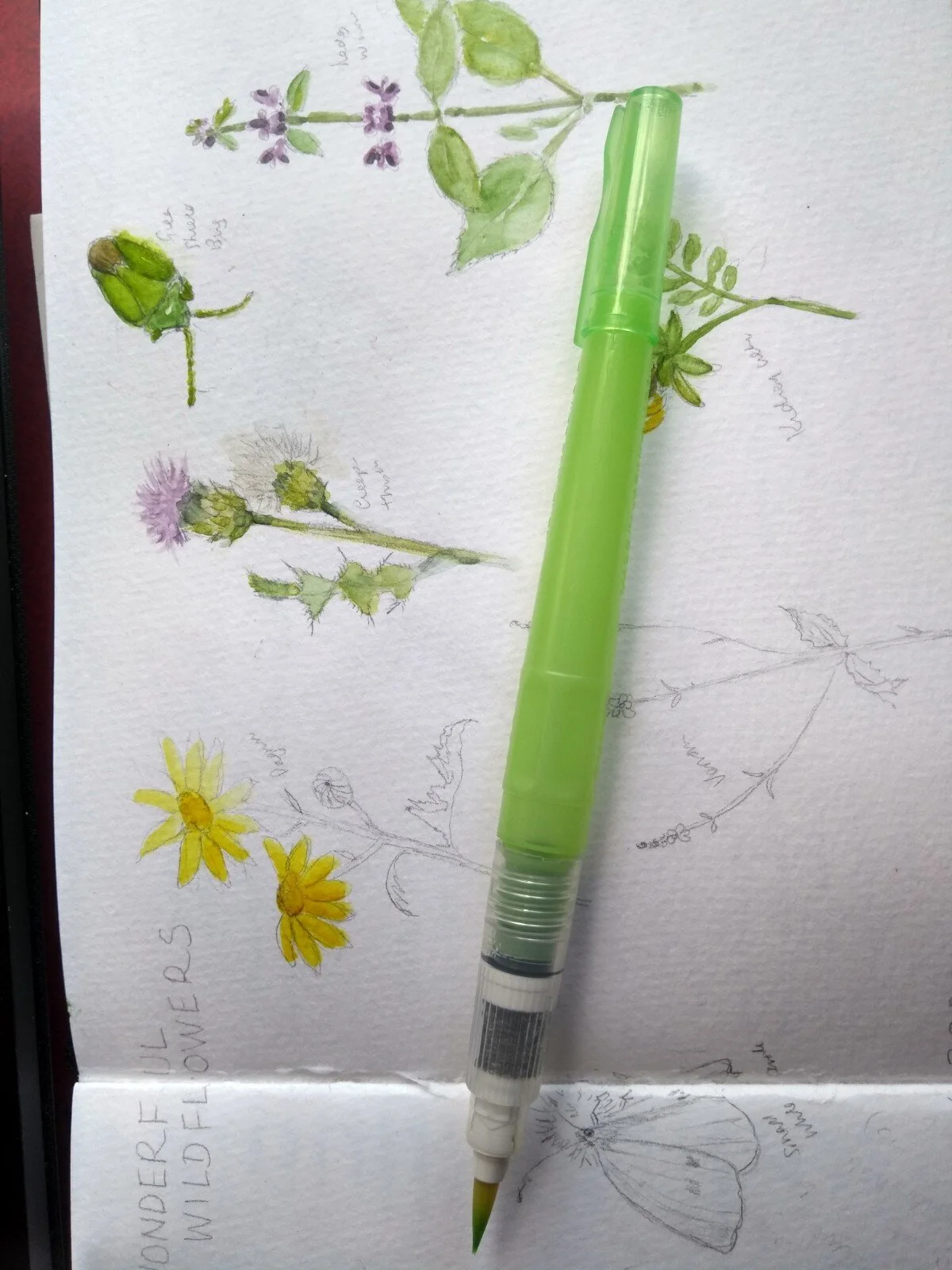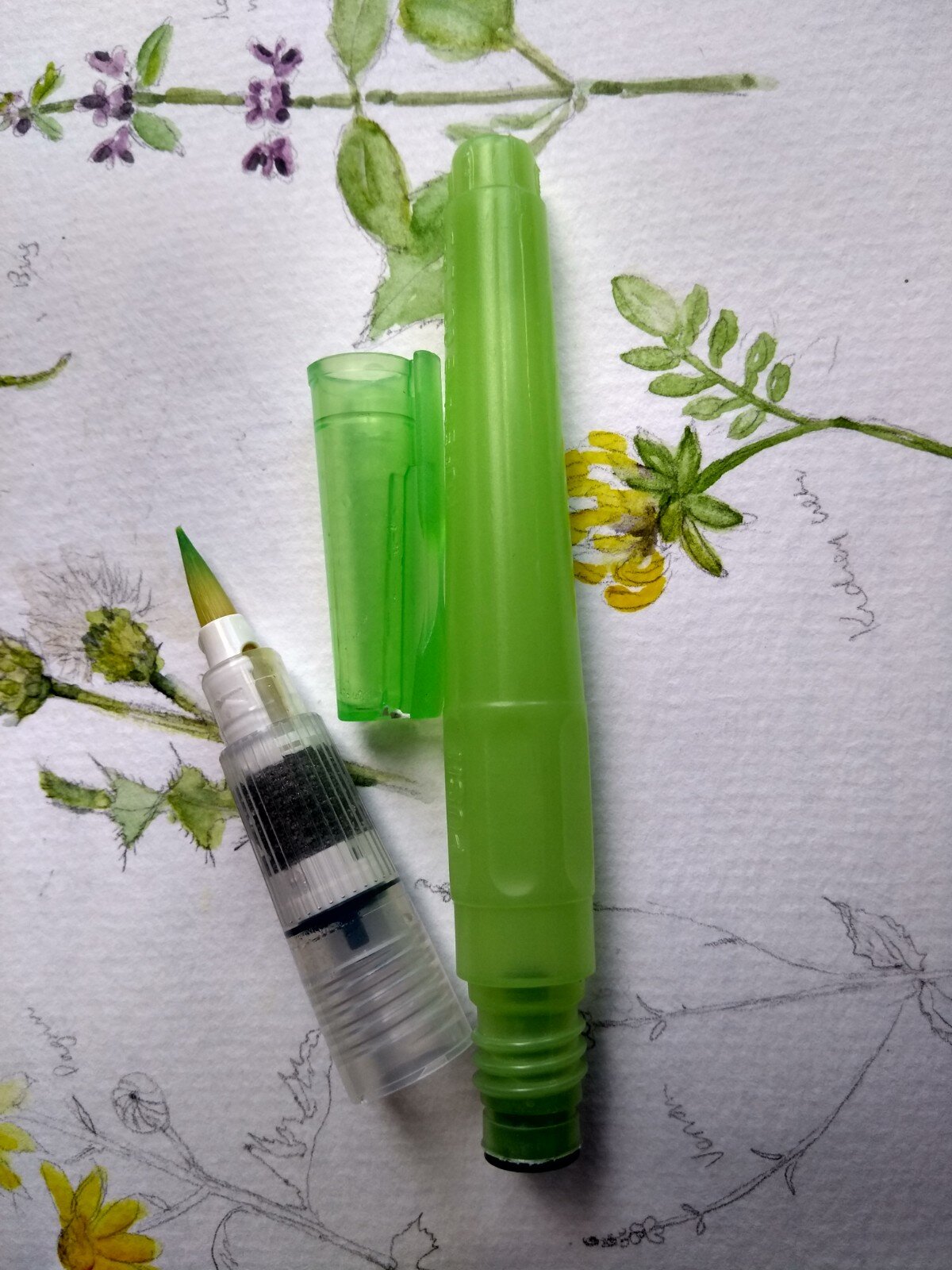Nature Journal Practical: Using a waterbrush
/This week I had several questions about waterbrushes, so I thought I’d cover them here. I think they’re brilliant and many outdoor sketchers use one.
The idea is simple, it’s a brush which carries it’s own, self contained reservoir of liquid, allowing you to paint in watercolour, wherever you happen to be; so you don’t need to carry additional water and a container!
I used my small waterbrush to paint this journal entry, and you can see how well it handles tiny details.
You simply fill the reservoir with water, and use it in the traditional way for your paints or water soluble media. It can also be filled with diluted watercolour paint, or ink, for direct work, if you prefer. It’s a wonderful tool for sketching on the go, and it’s brilliant for field studies and quick, on the spot, sketching. Not having to faff about with water makes life so easy, plus, it reduces the size and weight of your portable kit when you’re out and about.
There are several brands on the market in the UK. I’ve tried them all, but my absolute favourite are Zig H20 Waterbrushes made by Kuretake. I find them lovely to handle and they keep their points well. Pentel brushes are easily available and very popular too. Different brushes have different ways of filling, but they’re all pretty straightforward.
My waterbrushes are the only piece of plastic kit I regularly use. In fact, I love mine so much I often pick one up instead of my regular brushes when I’m working indoors! Looked after they will last a very long time. It’s a good idea to empty them and keep them dry when not in use, to stop any mold forming. I add a tiny drop of white vinegar to my water which keeps it fresh, and flush the brushes through with vinegar every so often. It’s never seemed to have affected the paint or the performance.
I would definitely recommend giving one a try in your journaling kit, you’ll have a lot of fun!





